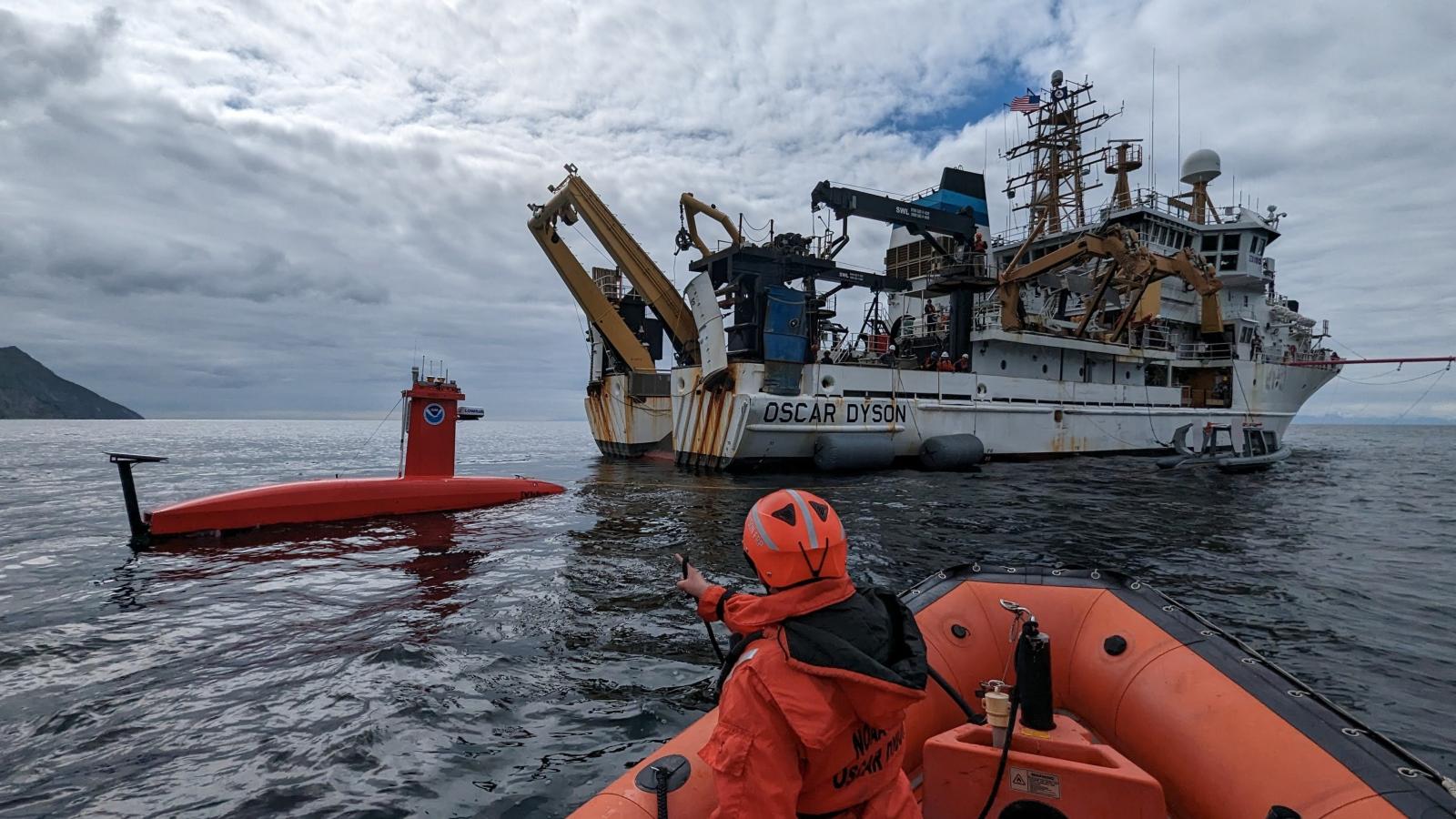
NOAA operates a wide variety of uncrewed marine systems to collect environmental data. NOAA uses the term "uncrewed marine systems" to describe ocean robots which are also often described as "autonomous," "unmanned," or "remotely piloted" vehicles. They can operate on the surface of the water, and from just below the surface to the seafloor.
UMS provide a wide range of capabilities to NOAA, including living marine resources management, hurricane research, seafloor mapping, and a multitude of other capabilities that provide scientists, other government agencies, and academic and industry partners with data in some of the world's most remote and harsh environments.
The Uncrewed Marine Systems Division of the NOAA Uncrewed Systems Operations Center provides support, operations, and transitioning of NOAA uncrewed marine systems, and is a growing sector of NOAA.
Headquartered at the NOAA Gulfport Ship Island Building in Gulfport, Mississippi, the Uncrewed Marine Systems Division is staffed by a team of marine research and technology professionals who specialize in uncrewed marine system technology and transitioning uncrewed marine systems to regular use throughout the agency.
At present they provide program support to NOAA researchers, and are working to operationalize a fleet of uncrewed marine systems that can fulfill a variety of NOAA missions.
NOAA UMS reports, policies, and other resources can be found on the 'Resources' page.
NOAA researchers or field offices looking for more information should visit the UMS Division's intranet site.
United States

